10 Myths Dieticians are Tired of Debunking.
Tabitha Hume
Registered Dietician (S.A.)
Myth #1: Fat free milk has lots of sugar added
It doesn’t. The current myths are twofold:
1. Anything that is fat free must be very high in sugar. Sometimes this is true, but definitely not all the time AT ALL. And not in milk. That’s fake news.
2. The other myth is that fat free milk has undergone a process which strips it of all its goodness and has added all sorts of unhealthy chemicals to it. Again; rubbish. All that 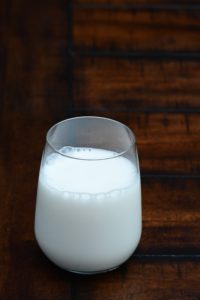 happens in the process to produce fat free milk is that the freshly pasteurized milk is put into a centrifuge (it’s spun around really fast and all the fat globules rise to the edge and are skimmed off, leaving everything except the fat in the milk). Yes, it does reduce the fat-soluble vitamins that are dissolved in the milk-fats, but you shouldn’t be relying only on milk to get those vitamins in the first place, so what’s the difference? Also, skim milk actually has MORE protein per serving than full cream milk, not less. So it has NOT had all the goodness taken out! So, removing the saturated fats from full cream milk to make skim milk, means a slimmer, lower-cholesterol you with less risk of diabetes. All dairy, however, should be reduced or substituted with plant milks to reduce overall inflammation.
happens in the process to produce fat free milk is that the freshly pasteurized milk is put into a centrifuge (it’s spun around really fast and all the fat globules rise to the edge and are skimmed off, leaving everything except the fat in the milk). Yes, it does reduce the fat-soluble vitamins that are dissolved in the milk-fats, but you shouldn’t be relying only on milk to get those vitamins in the first place, so what’s the difference? Also, skim milk actually has MORE protein per serving than full cream milk, not less. So it has NOT had all the goodness taken out! So, removing the saturated fats from full cream milk to make skim milk, means a slimmer, lower-cholesterol you with less risk of diabetes. All dairy, however, should be reduced or substituted with plant milks to reduce overall inflammation.
Myth #2: Additives are harmful
No they aren’t. In fact, many additives are rather good for you! An example would be citric acid (a preservative) which aids in the absorption of iron from foods, and also acts as part of an anti-oxidant cascade with Vitamin C. The additives that are in our foods are really not that scary at all, if you know what they are, and who is consuming them. Sodium benzoate and sulphur dioxide, for instance, do need to be avoided by people with atopy (asthma and eczema). MSG should be avoided by post-menopausal salt-sensitive hypertensive women. People with  hypoglycaemia or binge-eating disorder should reduce artificial sweeteners of all types. But if you have none of the above disorders, then these additives are nothing but helpful in keeping your food fresh for you and allowing healthy eating to be a little easier with less wastage. Look, we’d all love to grow our own organic veg in our back gardens, but practically speaking, this isn’t always an option, so rather than buying very fat-laden take-aways when you are too tired to cook, it would still be better to use packeted Cook in Sauces with lean protein and veg. You see, being too puritan with regards these additives leaves you with only one choice: to cook a full meal. Yes, this is what we are supposed to do. But in this day and age, there aren’t that many households where one of the spouses remains at home to cook and clean every day. As a result, both adults arriving home at 19h00 with unbathed children and headaches often necessitates quick results. Use the Cook in Sauce with a few additives in them! At least you will stay slim, heart-healthy and well-nourished with a balanced meal, rather than your all-or-nothing dogma leaving ONLY a take-away option as viable. Keep your head on straight….
hypoglycaemia or binge-eating disorder should reduce artificial sweeteners of all types. But if you have none of the above disorders, then these additives are nothing but helpful in keeping your food fresh for you and allowing healthy eating to be a little easier with less wastage. Look, we’d all love to grow our own organic veg in our back gardens, but practically speaking, this isn’t always an option, so rather than buying very fat-laden take-aways when you are too tired to cook, it would still be better to use packeted Cook in Sauces with lean protein and veg. You see, being too puritan with regards these additives leaves you with only one choice: to cook a full meal. Yes, this is what we are supposed to do. But in this day and age, there aren’t that many households where one of the spouses remains at home to cook and clean every day. As a result, both adults arriving home at 19h00 with unbathed children and headaches often necessitates quick results. Use the Cook in Sauce with a few additives in them! At least you will stay slim, heart-healthy and well-nourished with a balanced meal, rather than your all-or-nothing dogma leaving ONLY a take-away option as viable. Keep your head on straight….
Please also remember that it is very important to find practical ways to eat low-fat, low GI, regularly enough and with PLENTY of fruits and veg. Getting THIS right is enough of a challenge, believe me… most people don’t get it all right. But once you’ve got this down to perfection, then you can become the puritan working on additive-free organic eating. Yes, it’s important. But work on the big issues first.
Myth #3: Have more fibre for IBS
Irritable bowel syndrome is an inflammatory disorder characterised by windiness, bloating, discomfort, diarrhoea and/or constipation. Very often, the misguided approach by health gurus is to increase fibre. Unfortunately, this only  makes it worse. Then, with worsening symptoms, it is unscientifically concluded that the person has GLUTEN INTOLERANCE. 9 time out of 10 this is a misdiagnosis due to mismanagement of IBS. The right approach is to isolate WHICH fibre types are appropriate and which are not, specifically for IBS. Going on a traditionally ‘healthy’ diet with plenty of wholegrains may just be the worst thing for an IBS sufferer! Bear in mind, too, that many IBS problems arise from insufficient carbohydrates in the diet resulting in too little volume in the stool and poor probiotic health to regulate digestion. Fibre and water are NOT the only aspects to tackle with IBS!
makes it worse. Then, with worsening symptoms, it is unscientifically concluded that the person has GLUTEN INTOLERANCE. 9 time out of 10 this is a misdiagnosis due to mismanagement of IBS. The right approach is to isolate WHICH fibre types are appropriate and which are not, specifically for IBS. Going on a traditionally ‘healthy’ diet with plenty of wholegrains may just be the worst thing for an IBS sufferer! Bear in mind, too, that many IBS problems arise from insufficient carbohydrates in the diet resulting in too little volume in the stool and poor probiotic health to regulate digestion. Fibre and water are NOT the only aspects to tackle with IBS!
Myth #4: Sugar causes diabetes
There is much research showing how people that consume a huge amount of sugary foods (usually in place of normal, healthful and nutritious foods) are fatter than those who eat less sugary foods. Also, it is shown that diets
 high in sugary colddrinks are strongly linked to the development of Type 2 Diabetes. True. But unfortunately, you cannot just take that point alone. And here is where the problem with understanding research correctly comes in. You see, most diets that include a high colddrink intake are also coupled with a very high junkfood intake (translated as a high fat intake). People who are conscious low-fat and healthy eaters don’t usually include large quantities of colddrinks and sweeties. However, they also don’t eat large quantities of deep-fried foods / cheese and bacon-doused Southern Fried Chicken and deep fried chips. So, when you look closely at the research linking the diabetes with high sugar intake, you will notice that NONE of them attribute diabetes to sugar as a causative culprit per se. They note that high sugar AND high fat diets (in the ABSENCE of sufficient wholegrains and fruits and vegetables) are linked to Type 2 Diabetes. You CANNOT attribute this complex disease to just one culprit. In fact, subsequent biochemical research has shown unequivocally that diets high in fats directly cause decreased insulin sensitivity (which is the precursor to diabetes). As much as tons of sugar causes the pancreas to work extra hard and is not good at all, it doesn’t actually have this effect on the insulin receptors, leading to diabetes. In short; too much fat causes the onset of Type 2 diabetes, not too much sugar. Not saying tons of sugar is OK. It really isn’t. It’s just not the primary problem in the development of diabetes. Too much fat is.
high in sugary colddrinks are strongly linked to the development of Type 2 Diabetes. True. But unfortunately, you cannot just take that point alone. And here is where the problem with understanding research correctly comes in. You see, most diets that include a high colddrink intake are also coupled with a very high junkfood intake (translated as a high fat intake). People who are conscious low-fat and healthy eaters don’t usually include large quantities of colddrinks and sweeties. However, they also don’t eat large quantities of deep-fried foods / cheese and bacon-doused Southern Fried Chicken and deep fried chips. So, when you look closely at the research linking the diabetes with high sugar intake, you will notice that NONE of them attribute diabetes to sugar as a causative culprit per se. They note that high sugar AND high fat diets (in the ABSENCE of sufficient wholegrains and fruits and vegetables) are linked to Type 2 Diabetes. You CANNOT attribute this complex disease to just one culprit. In fact, subsequent biochemical research has shown unequivocally that diets high in fats directly cause decreased insulin sensitivity (which is the precursor to diabetes). As much as tons of sugar causes the pancreas to work extra hard and is not good at all, it doesn’t actually have this effect on the insulin receptors, leading to diabetes. In short; too much fat causes the onset of Type 2 diabetes, not too much sugar. Not saying tons of sugar is OK. It really isn’t. It’s just not the primary problem in the development of diabetes. Too much fat is.
Myth #5: Tea has more caffeine in it than coffee
No it doesn’t!!! Where on earth does this drivel come from?!!
High caffeine intake is closely linked to anxiety, high blood pressure, certain blood glucose issues and liver problems. So advice to discourage high intakes of coffee has been skewed a little. Many people seem to have become very excitable about completely cutting out caffeine (which is a good step but often unnecessary). You see, the general  advice was “Cut down on your coffee intake to be healthier and avoid spikes in anxiety and blood pressure etc”. This means CUT DOWN. And unless you have medical issues that need addressing, we are not saying “CUT OUT COMPLETELY AND BE TERRIFIED OF IT”. You see, if something is not broken, don’t fix it!
advice was “Cut down on your coffee intake to be healthier and avoid spikes in anxiety and blood pressure etc”. This means CUT DOWN. And unless you have medical issues that need addressing, we are not saying “CUT OUT COMPLETELY AND BE TERRIFIED OF IT”. You see, if something is not broken, don’t fix it!
But there will always be those conspiracy theorists who hear the message ‘cut down on caffeine’, take it and run with flags screaming “Take away all caffeine, even in tea! It’s evil and will kill you”. Now, tea DOES still contain some caffeine, but on average it is about one-fifth of the amount of caffeine found in a cup of coffee. So, if you have very bad high blood pressure, cutting OUT coffee would be a good idea. Having tea would be better. But because there is still a little caffeine in tea, having 15 cups of tea per day would add up and not be so good for this patient. But, the theorists wave their flags even higher and start fearmongering people, saying not that tea still has a little caffeine, but actually HAS MORE CAFFEINE THAN COFFEE… oh dear.
One wonders….
Myth #6: Black chocolate is healthy
The wonderfully indulgent cocoa bean and its resultant cocoa powder (same as cacao), contains a fair amount of 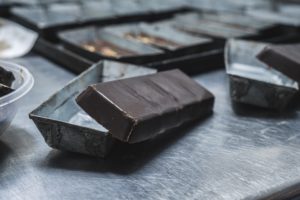 feel-good chemicals inside it, and it also contains a nice amount of anti-oxidants (things that help to prevent cancer). This is why dark chocolate (chocolate made with MORE cocoa powder than its milk-chocolate counterpart) will have MORE anti-oxidants in it. However, this does not give licence to encourage people to actively INCLUDE dark chocolate in the diet on a regular basis. It is still prudent to see it as a treat. One would look to other foods to obtain anti-oxidants in higher dosages than to eat lots of dark chocolate to try and get enough from there
feel-good chemicals inside it, and it also contains a nice amount of anti-oxidants (things that help to prevent cancer). This is why dark chocolate (chocolate made with MORE cocoa powder than its milk-chocolate counterpart) will have MORE anti-oxidants in it. However, this does not give licence to encourage people to actively INCLUDE dark chocolate in the diet on a regular basis. It is still prudent to see it as a treat. One would look to other foods to obtain anti-oxidants in higher dosages than to eat lots of dark chocolate to try and get enough from there
IF you want a little treat, dark chocolate is a nice indulgence that makes you feel good as well as having the added little benefit of containing a SMALL amount of cancer-preventing chemicals. However, if you want to lose fat, for instance, remember that dark chocolate has a lot more fat in this than milk chocolate J. And a lot of dark chocolate may end up with a cancer-free but fat person. Not necessarily a great outcome.
Myth #6: Red wine lowers cholesterol.
Red wine is lovely, delicious and is a perfectly acceptable addition to a well-balanced diet. So long as it’s kept in  moderation. Over a certain amount, it suddenly tips and becomes unacceptable and causes damage (both short-and long-term) to the body. Now, a few years ago, scientists isolated that there was a wonderful chemical called resveratrol found in red wine, in particular. It is a type of anti-inflammatory chemical, and large amounts of resveratrol has been linked to reduction in cardiovascular disease. However, what was not reported by excited reporters, was that the amount of red wine that one would have to consume in order to derive SUFFICIENT resveratrol to make a difference in heart health, is so much that it would cause many other problems in the body before it lowers the cholesterol! So, when we say, “A little red wine in the diet is acceptable and may even contain a few things that contribute small health benefits” we are NOT saying “Drink lots of wine because it will lower your cholesterol”!! It shows that you can hear what you want to hear, right?
moderation. Over a certain amount, it suddenly tips and becomes unacceptable and causes damage (both short-and long-term) to the body. Now, a few years ago, scientists isolated that there was a wonderful chemical called resveratrol found in red wine, in particular. It is a type of anti-inflammatory chemical, and large amounts of resveratrol has been linked to reduction in cardiovascular disease. However, what was not reported by excited reporters, was that the amount of red wine that one would have to consume in order to derive SUFFICIENT resveratrol to make a difference in heart health, is so much that it would cause many other problems in the body before it lowers the cholesterol! So, when we say, “A little red wine in the diet is acceptable and may even contain a few things that contribute small health benefits” we are NOT saying “Drink lots of wine because it will lower your cholesterol”!! It shows that you can hear what you want to hear, right?
Myth #7: White bread is so bad for you. In fact, it’s like POISON to the body!
Traditional, white bread in the supermarkets is made from wheat flour, which happens to be a quick-release 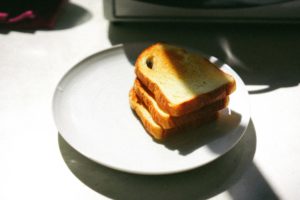 carbohydrate (spiking blood glucose levels and taxing the pancreas). This white bread traditionally has very little fibre in it as well. This means that if one of the main sources of fibre in one’s diet comes from bread alone (this is true for many people), then having white bread instead of wholegrain bread, will lead to a deficiency in fibre which causes health problems. However, just because it is ABSENT of fibre, it doesn’t mean that eating it will actually HARM you. It just means that you now need to look for fibre in other foods that you eat. Also, remember that although quick-release carbohydrates like white bread spike your blood glucose levels and so should be avoided by diabetics, BROWN AND WHOLWHEAT BREAD ARE ALSO QUICK-RELEASE CARBOHYDRATES, spiking blood glucose levels.
carbohydrate (spiking blood glucose levels and taxing the pancreas). This white bread traditionally has very little fibre in it as well. This means that if one of the main sources of fibre in one’s diet comes from bread alone (this is true for many people), then having white bread instead of wholegrain bread, will lead to a deficiency in fibre which causes health problems. However, just because it is ABSENT of fibre, it doesn’t mean that eating it will actually HARM you. It just means that you now need to look for fibre in other foods that you eat. Also, remember that although quick-release carbohydrates like white bread spike your blood glucose levels and so should be avoided by diabetics, BROWN AND WHOLWHEAT BREAD ARE ALSO QUICK-RELEASE CARBOHYDRATES, spiking blood glucose levels.
So, if you are looking for fibre for colon health and cholesterol reduction, have wholewheat bread.
If, however, you are looking at blood glucose control for diabetes and weight loss, both white and wholewheat bread are discouraged, because they are both quick-release.
This is where LOW GI bread comes in. Low GI bread is normal bread, which has been mixed with a very healthy type of ‘nature’s superglue’ which changes it to become slow-release, thus stabilising the release of glucose into the blood. And it doesn’t matter if that LOW GI bread is white, brown or wholewheat. It is still low GI and so therefore acceptable for diabetics.
Myth #8: Pasta is fattening.
“Mamma Mia!” You talka da rubbeesh! Again it depends on what KIND of pasta. You see, original, Italian pasta, 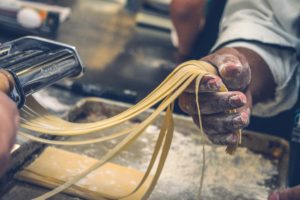 cooked al dente and served with a well-cooked sauce is LOW GI and does NOT cause fat gain! This is because proper Italian Durum Wheat Semolina is a species of wheat which behaves very differently in the body to normal wheat flour. So, even white pasta that is made from DURUM WHEAT SEMOLINA is a slow-release (or LOW GI carbohydrate) and will not cause spikes in insulin or cause fat gain. Cheaper versions of pasta, however, which are made from wheat flour (even if it’s wholewheat flour) are quick-release (HIGH GI). These spike the blood glucose level when eaten, causing more insulin to be released, and this causes fat gain if fats are eaten in the meal (like a creamy bacon and cheese sauce!). But the real Italians have got it right. Eat Italian pasta as part of a diabetic or weight loss diet but make sure the sauce is very low in fat!
cooked al dente and served with a well-cooked sauce is LOW GI and does NOT cause fat gain! This is because proper Italian Durum Wheat Semolina is a species of wheat which behaves very differently in the body to normal wheat flour. So, even white pasta that is made from DURUM WHEAT SEMOLINA is a slow-release (or LOW GI carbohydrate) and will not cause spikes in insulin or cause fat gain. Cheaper versions of pasta, however, which are made from wheat flour (even if it’s wholewheat flour) are quick-release (HIGH GI). These spike the blood glucose level when eaten, causing more insulin to be released, and this causes fat gain if fats are eaten in the meal (like a creamy bacon and cheese sauce!). But the real Italians have got it right. Eat Italian pasta as part of a diabetic or weight loss diet but make sure the sauce is very low in fat!
Myth #9: Coconut oil is good for you.
Any food in the whole world has good and bad attributes.
Everything.
But sometimes people get caught up and believe a food is ONLY good. 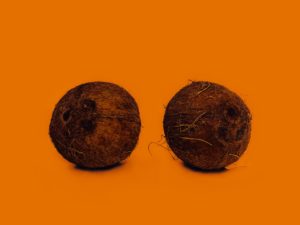
The coconut oil ‘cures-all-ills’ fad has done this, despite dieticians warning everyone that things aren’t as simple as they seem. Coconut oil is revered because it does not oxidize when heated to very high temperatures, like other oils do. However, this health attribute really only applies to those who re-use oil over and over again, day after day in their cooking. If you heat up coconut vs olive oil once for shallow-frying some onions in it, there really is very little difference. The other positive attribute that has run wild comes from one research paper showing a group of people who ate plenty of coconut oil and who had higher “GOOD” cholesterol (HDL) than others. This is a very good attribute indeed. But unfortunately selective hearing has caused people to now take this and blow it way out of proportion, encouraging it’s use in everything, to cure ALL health problems including cancer. Unfortunately, if you look a little closer at the research, and the replicated studies after this one, you will notice that although the HDLs do increase in these people, their bad cholesterol also increased, as did their body fat percentage. Interesting how people take one fact out of context and suddenly create an all-encompassing health rule; “Coconut oil is good for you!”.
These 10 myths are just a small sample of MANY, MANY myths that sadly exist. They are like broken telephones. A  study emerges with a bit of potentially positive news in it. Scientists take this and work on more studies to see how much, with whom and how significant the positive attribute is. Non-scientists hear the potentially good news and speak of it to others; in a simpler and more confirmed manner. Then, the rest of the population get completely carried away with novelty of a small amount of good news, and manage to ignore what they don’t want to hear and put it on a pedestal for all to worship as the new ‘diet gospel’.
study emerges with a bit of potentially positive news in it. Scientists take this and work on more studies to see how much, with whom and how significant the positive attribute is. Non-scientists hear the potentially good news and speak of it to others; in a simpler and more confirmed manner. Then, the rest of the population get completely carried away with novelty of a small amount of good news, and manage to ignore what they don’t want to hear and put it on a pedestal for all to worship as the new ‘diet gospel’.
What’s more, the individual who ‘exposed the well-hidden truth to the vulnerable public’ is often revered as a hero and prophet; apparently whistle-blowing on a health industry that loves keeping people sick.
Oh dear. Qualified dieticians are despairing.
Who to believe, you ask?
Always see if the health news you are reading (and maybe believing) is written by a REGISTERED DIETICIAN. ![]() You’ll get the full picture. Not the sparkly fool’s gold that we all WANT to believe.
You’ll get the full picture. Not the sparkly fool’s gold that we all WANT to believe.
See my books for easy recipes that are quick, delicious and healthy (but often taste more indulgent than you’d believe!)
Or Follow me on Facebook (Tabitha Hume – Clinical Dietician) for daily news, cooking ideas and motivation!
10 Myths Dieticians are Tired of Debunking (print this article)



